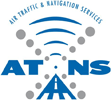Laser interference is a potential hazard to aircraft safety. Between 1 January 2010 and 29 February 2012, there have been 181 reported incidents of this nature at some of South Africa’s major airports.
Cape Town International airport has had the highest number of reported events, with 106 (58.6%) incidents, followed by Lanseria Airport at 21 (11.06%) incidents. OR Tambo International and East London airports are joint third with 14 (7.73%) reported incidents each.
Notable incidents generally involve people directing powerful laser beams at aircraft on final approach. Other low-flying aircraft such as police, ambulance or rescue helicopters have also been targeted. There have also been incidents where such lasers were directed at air traffic control towers. The fact that these lasers can startle the crew during the critical phase of flight (at the time when everyone has to be buckled in, all electronic devices off, and the cabin lights dimmed to allow for better visibility outside) makes these events serious. In the event that a pilot momentarily loses control of the aircraft due to being blinded by these lights, a serious aircraft accident could occur.
To date there have been no prosecutions. However, there have been two notable arrests in the period under review. The first was during the football World Cup in 2010 at a fan park in Durban, KwaZulu Natal. Currently, there’s a pending case in the Bloemfontein Courts where two people were arrested during the ANC Centenary celebrations for shining lasers at aircraft.
An aviation security committee comprising of the Air Traffic and Navigation Services (ATNS) company of South Africa, the South African Civil Aviation Authority, Airport Company South Africa, South African air force and the South African police service is working on identifying possible mitigation actions, including raising awareness, to address these concerns. Additionally, legislative gaps are being looked into, where punitive measures and/or sanctions are to be reviewed and strengthened.
In October 2011, a seminar on llaser interference in aviation, hosted by Eurocontrol, was held in Belgium, Brussels. Various aviation organizations, such as the International Air Transport Association (IATA), the International Civil Aviation Organization (ICAO), air traffic controllers, state aviation authorities, airline operators and associations, pilot associations, airport authorities and security managers, law enforcement agencies, legal experts, laser specialists and manufacturers, and medical experts attended.
The objective of the seminar was to bring all groups with a vested interest in this issue together to consider adopting a collective approach to reducing the growing threat of unauthorised laser interference in aviation. The seminar also looked into raising awareness, quantifying the degree of laser interference in aviation, exchanging knowledge, concerns and best practices in dealing with the issue and considering how communities can identify possible mitigation actions on both national and international levels.
Current applicable legislation requires that all owners of laser devices to have a permit. Lately, a disturbing phenomenon has reared its ugly head in South Africa. Illegal laser pointers are imported without permits and are sold on the black/grey markets such as trinket stores or flea markets.
The community-at-large is henceforth urged not to buy these devices and to report the selling thereof to the police.

